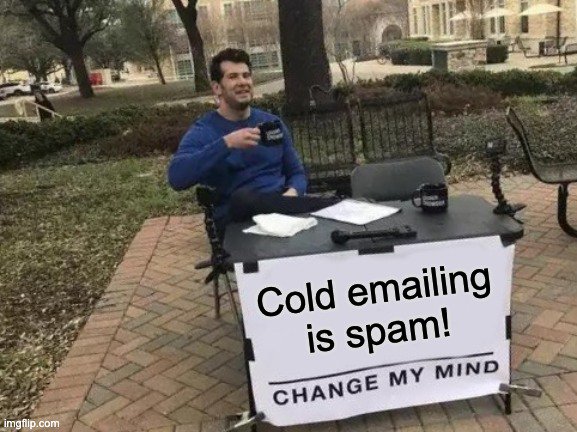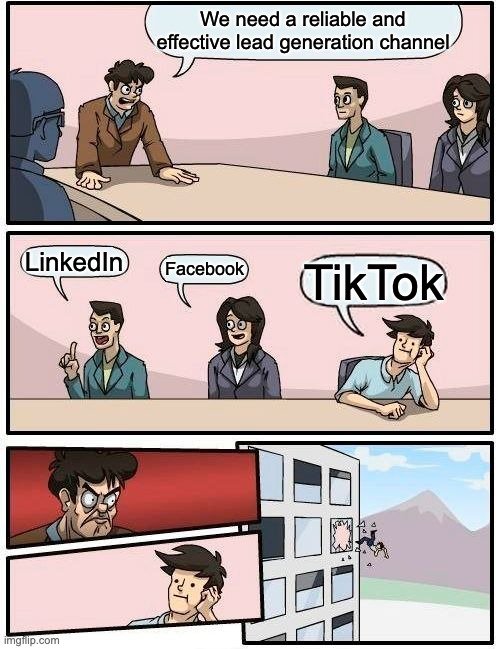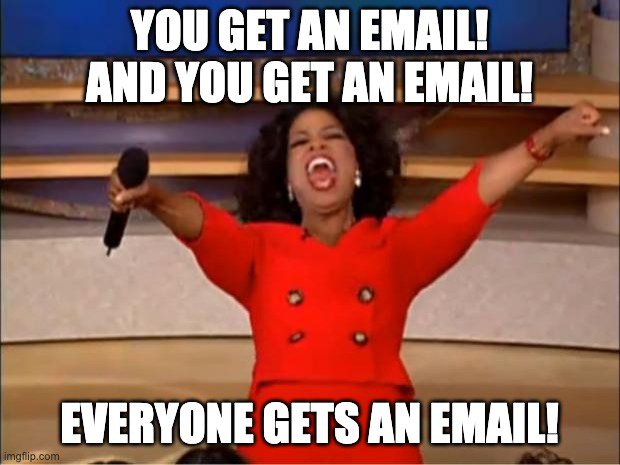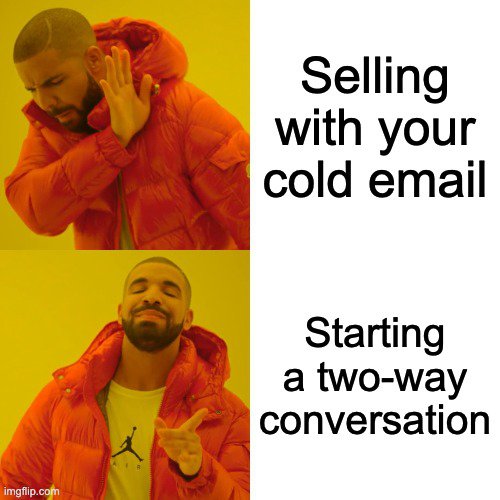L'envoi d'e-mails froids pour les startups
Un blog invité par Rimma Sytnik (Senior Digital Marketer of Reply)
Running a startup is hard work. And out of all the items on a startup owner’s to-do list, outreach should be hovering around the top of the list. Whether it’s prospective customers, investors, partners, or candidates you’re trying to connect with, there’s no better way to do that than a cold email.
Now, cold email doesn’t exactly have the best of reputations. Besides the usual claims that email is dead and you simply must be on the latest social media craze, the ‘cold’ aspect leaves plenty of people… well, cold 🥶
Well, not only is email alive and well, but cold email (when done correctly) could be a solid foundation for growing your startup. It’s how we grew Reply, and while we’ve branched out into other channels over time, our outbound cold email is still at the core of our business, and it can be at the core of yours too.
So, in this article, I’d love to share some of the pro tips and best practices on how to do that.
Qu'est-ce que l'e-mail froid ?
Cold email is simply emailing people who you’ve not had contact with previously, whether when looking for investments, offering a partnership, growing your team, or trying to get your first customers.
Ainsi, how’s that different from spam?

First off, this is where I get to tell you I’m not a lawyer (even though I’ve read a lot of John Grisham novels), and what I say is in no way legal advice. Regulations change, and you should do your own research to make sure your emails are in line with the requirements of your country (and the country you’re sending emails to if they’re different).
A good starting point is to familiarize yourself with the US Can-Spam regulations or the corresponding EU policies. Little details such as making sure you have your contact details visible and including an option for people to unsubscribe from future emails will help keep your cold email compliant.
L'e-mail à froid convient-il à tout le monde ?
While I honestly think every business can benefit from cold emailing, there are definitely some businesses that’ll benefit more from it than others.
Toutefois, l'essentiel n'est pas de savoir si une campagne d'envoi d'e-mails à froid vous convient, mais si elle conviendrait à vos clients potentiels.
The number one question: do they have an email address? While that seems like a silly question, I personally know old-school CEOs who barely look at their inbox 📠 For some B2C businesses, your target market may despise computers.
Yet, if your prospects are online, then they’re likely using email.
Pourquoi ne pas utiliser les médias sociaux ?
Now, I can hear someone saying that while their prospects may be online, they spend all their time on social – looking at cat videos on Facebook and lip-synching on TikTok maybe networking on Linkedin.

That’s a fair point. They’re all great platforms, and we regularly post content (along with paid ads) on Facebook, LinkedIn, Quora, and more.
But while we use these social platforms, they’ll never come close to email. Why?
- Ici aujourd'hui, parti demain. While some social networks last longer than others, it’s only a matter of time before the next hot trend comes along. You can either try jumping on every platform, which is a huge effort, or risk picking the wrong one and losing out.
- Leur plateforme, leurs règles. This goes out to everyone who was building an organic presence on Facebook. When they throttled the organic traffic, essentially making it a pay-to-play platform, plenty of businesses saw their reach drop to zero overnight. Even if you’re paying, you still have to suivre leurs règlesqui sont souvent sujettes à interprétation et peuvent être modifiées à tout moment.
- Leur portée est limitée. While it feels like everyone’s on Facebook, Instagram, or the like, the fact is they’re not. You can throw all the money you want at TikTok, I’m never going to see your content there (and neither are most B2B leads).
On the other hand, email is an intrinsic part of people’s lives. Most of us rely on our inbox, checking it countless times throughout our day. Many use it to plan their work, to hold important information, and keep in touch with their team and their customers.
If you want to go where the people are, that means being in their inbox 📥
À qui envoyer des courriers électroniques non sollicités ?
L'e-mail à froid est tellement puissant et excitant que de nombreux spécialistes du marketing, trop enthousiastes, envoient des e-mails promotionnels à tous ceux qui ont une adresse électronique.

Yeah… that’s spam 🚫, and part of the reason cold email has such a bad rep.
Votre tâche consiste à envoyer un message personnalisé et pertinent à la bonne personne. Pour ce faire, vous devez envoyer vos courriels à une liste très ciblée.
For example, let’s assume you’re selling a point of sale (POS) software. Obviously, it makes sense that you’d only want to email people who actually have retail businesses. Going a step further, you might only want to target those who are located in a certain region or country or have a certain size store.
So what about your product/service? Who’s your target market? Hopefully, that’s something that was considered in the first stages of your startup. It’s a lot easier to come up with an Ideal Customer Profile (ICP) early on.
On the other hand, it might be tempting to say that your product is for everyone and that every single person on the planet needs and wants what you’re offering.
Alerte au spoiler: It isn’t, and they don’t.
Even if you’re selling water, there’s a massive difference between selling to the no-frills market and the elite water connoisseurs, who only want water that’s been infused with unicorn tears.
The good news is that once you get specific on who you’re sending your email to, it gets a million times easier to write that email.
If you’re emailing everyone, your message will inevitably become vague and weak. However, if you’re emailing Sales Managers who work at companies with >100 employees and a turnover of $1,000,000 who are currently using Acme Products for their CRM, it suddenly becomes a lot easier to be relevant.
By being personalized and relevant, you’ll already be a million miles ahead of most of the emails clogging up junk folders. 10 relevant, personalized emails sent to the right prospects will beat 100,000 vague emails sent to random people.
Envoyer un courriel froid efficace
Maintenant, la grande question à un milliard de dollars : Comment rédiger un courriel froid qui donne des résultats ?
Do your research 🔎
For the best cold emails, most of the work is done before you write a single word. You need to research, research, and then, do a little more research. Obviously, you must know what you’re selling inside and out, but you also have to know who you’re selling to – i.e. your target market.

And I’m not talking about a spreadsheet stuffed with demographic data. This is about knowing their beliefs, their goals, their pain points, their objections – all the things that keep your prospects awake at night.
To find that out, it’s best to actually go and talk to your existing customers. Get out from behind your computer and speak with them face-to-face. If you don’t have any customers yet, find people who you’d like to be your customer.
Get to know your ideal customer, and you’ll know what to say to your prospective customers.
Find contact details 🎯
Recherche d'adresses électroniques pour ces personnes pourrait être un peu plus difficile que identifier votre PCI.
While you can buy a list of names and addresses, it’s definitely a case of buyer beware. Of course, there are some reputable data providers out there. But, in most cases, you’ll be paying for unverified, incomplete, or out-of-date information. For one of the lists we tested, over 50% of the addresses were incorrect.
C'est pourquoi je recommande toujours DIY. En construisant vous-même votre liste, vous savez que chaque nom qui y figure est l'un de vos clients idéaux. Vous pouvez également profiter de cette occasion pour en apprendre un peu plus sur vos clients.
Where can you start? I’d go with LinkedIn first. You can narrow down your search to accounts that match your exact parameters in Sales Navigator and then find those people’s email addresses one by one or in bulk (depending on the tools you use).
Write an email that’s focused on them 💌
It’s easy to get carried away when emailing your prospects. You’re proud of your company and product so it’s only natural you want to tell people all about it. Just not in your outreach emails, ok?
The prime focus of your email should be your prospect. Talk about them and the challenges they’re facing. When you do talk about your solution, it should be clearly related to how it helps them meet their objectives.
My quick trick is to imagine your prospect is in front of you, reading your email. For each line, they’re asking, “So what? What’s in it for me?”
- The fact you’re a new company… So what?
- The fact you’ve won an award… So what?
- The fact your product uses 8g nanotech… So what?
To make your emails even more relevant, segment your list as much as is practical. Keeping your prospect and what’s important to them in the forefront of your mind will put you ahead of 99% of the cold emails out there.
Have a CTA 📢
Think about what you want your prospect to do after reading your email. In the perfect world, they’d become a customer or investor in the first email but, unfortunately, real life doesn’t work that way.
Gardez donc des attentes réalistes :
- Demander à quelqu'un d'investir dans votre entreprise après un seul courriel : Peu probable.
- Poser une question à quelqu'un et entamer une conversation à deux : Beaucoup plus probable.

En d'autres termes, utilisez votre premier courriel pour tenter d'entamer une conversation avec votre prospect, plutôt que d'essayer de conclure la vente.
Write an effective subject line 🧲
Les lignes d'objet doivent faire beaucoup de travail dans très peu d'espace. Le fait que votre prospect ouvre ou non votre chef-d'œuvre d'e-mail froid dépend en grande partie de la qualité de votre ligne d'objet.
Cold email mistake #1 is trying to be too clever, and nowhere is this more obvious than in the subject line. Too many experts have told us we need to invoke curiosity with our subject lines, but if you’re not too careful your subject line will sound like all the others in the spam folder.
So, if you’re selling standing desks…
- Bon: Economisez 20% sur votre premier bureau debout
- Mauvais: RE: You won’t believe what Oprah Winfrey just did on live TV
In today’s world, clarity will make you stand out far more than any click-bait headline and get you far more opens too.
Also, remember that your subject line will get cut off if it’s too long (especially on mobile devices), so definitely keep it as short as you can. At Reply, we’ve found 3-7 words to be optimal.
Conclusion
Voilà qui est fait. Loin d'être morts, les messages électroniques non sollicités sont un outil puissant.
Even better, they don’t have to be spammy to be effective. In fact, sending personalized and relevant emails will get you the best results.
By taking the time to research your prospects and writing an email focused on them and their needs, you can use cold emails to reach your goals, whether that’s finding your first investor or winning your next customer.
A little about Rimma:
Rimma Sytnik is a Senior Digital Marketer at Reply.io with 4+ years of experience. She’s experienced in email & messenger marketing, on-page SEO and link building.
- Fix It Fast - 3 avril 2024
- Save Your Emails - 21 décembre 2023
- Trace Any Relationship - 1er décembre 2023
